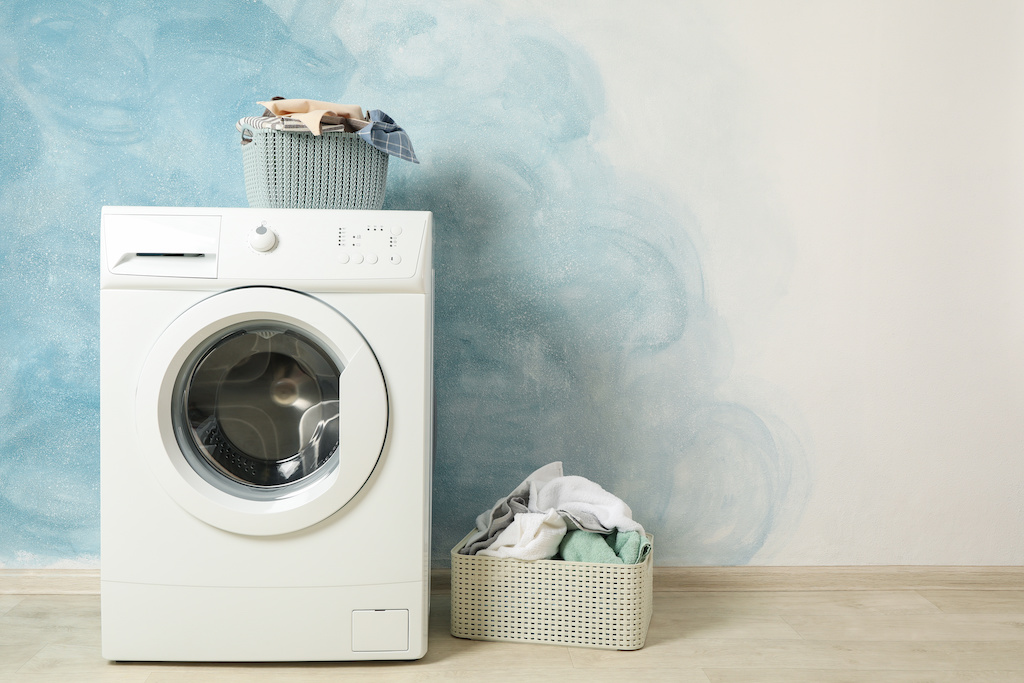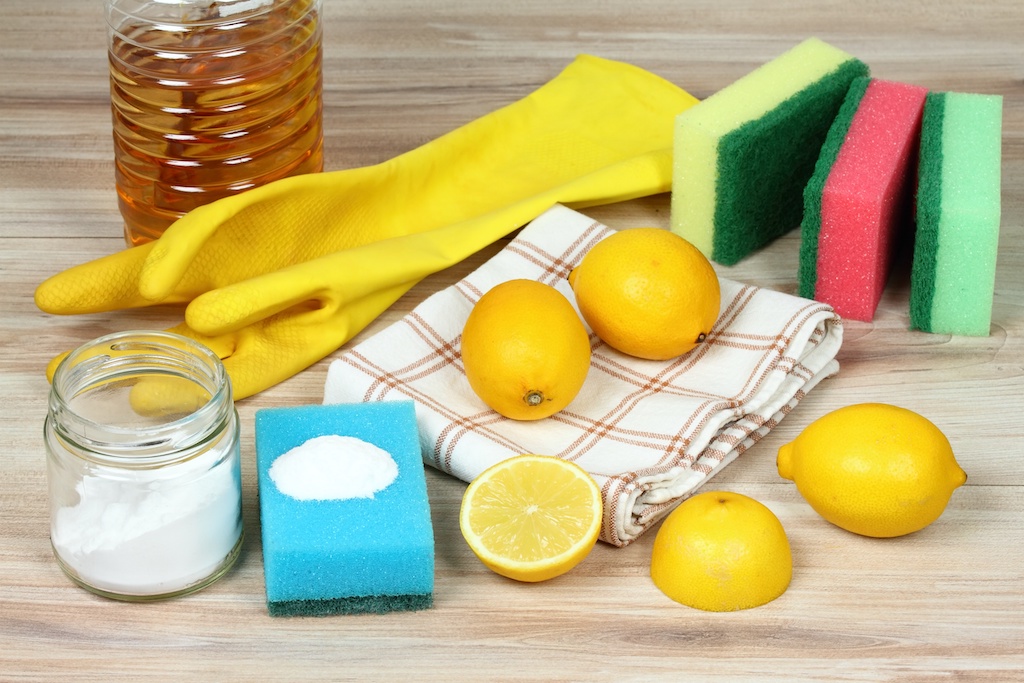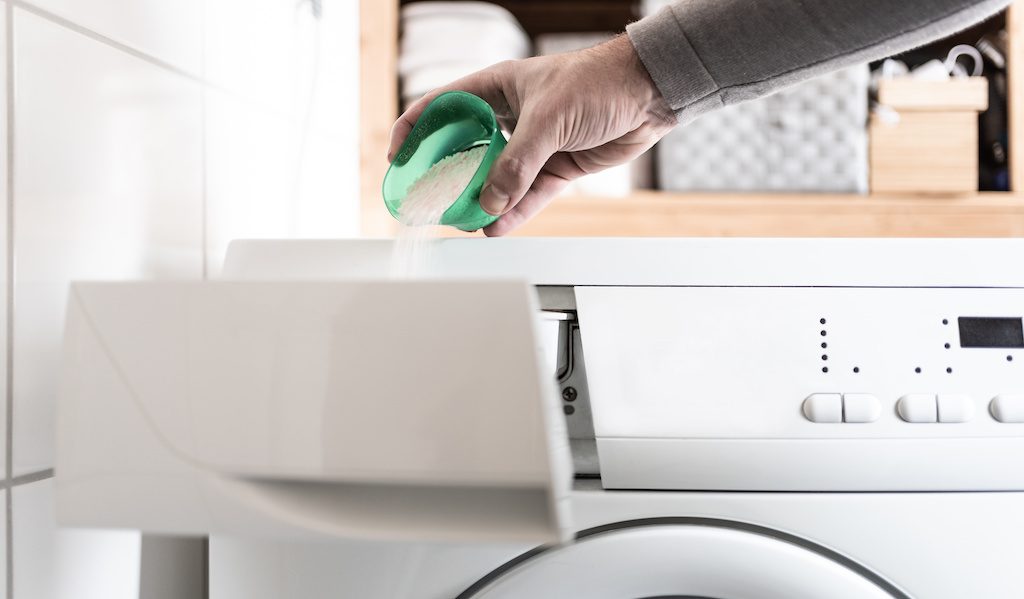If not used and maintained correctly, the washing machine can quickly become clogged and mouldy, resulting in bad odours that can transfer to your clothes. Discover all our tips on how to get rid of bad odours in washing machine, as well as our advice on preventing them from returning – and you can always count on Wecasa for your laundry needs!

How to Get Rid of Bad Odour in a Washing Machine?
Perform an Empty Clean of the Washing Machine
Are your clothes still producing an unpleasant odour even after being washed in the machine? To get rid of bad odour in the washing machine, you can start by performing an empty clean.
For this, set the machine to a high temperature (at least 60°C, ideally 90°C) to eliminate all bacteria, often responsible for the bad smells.
Add a natural cleaner:
- Baking soda with white vinegar: use 1 litre of white vinegar for a good cup of baking soda.
- White vinegar alone: use at least 1 litre, or even 3 litres, to which you can add a few drops of essential oils like tea tree oil, known for its antibacterial properties.
- Citric acid: use about 8 tablespoons of citric acid.
Pour the product of your choice directly into the drum and start a washing machine cycle at 60°C or 90°C. No laundry detergent should be added to the empty clean.
To maintain the washing machine and avoid bad odours, repeat the operation every 20 to 30 cycles.
Clean the Washing Machine to Prevent Bad Odours
If an empty clean of the washing machine isn’t enough to remove the bad odours, a more thorough clean is necessary! Indeed, bad smells can be caused by an accumulation of detergent and limescale or the appearance of mould in certain nooks of the washing machine.

Here’s how to clean a washing machine to avoid bad odours.
Clean the Washing Machine Seals
In addition to performing an empty clean of the washing machine (as explained previously) to descale the machine and clean the drum, you must clean the washing machine seals.
For this, you can scrub the seals with an old toothbrush and baking soda to remove mould and encrusted residues. Finish the operation by wiping with a cloth soaked in white wine vinegar and a microfibre cloth.
Clean the Washing Machine Detergent Drawer
To clean the washing machine detergent drawer, boil some water and pour it directly into the drawer. This helps to detach the detergent and limescale residues. Then proceed to rinse using a cloth soaked in white vinegar and dry with a clean cloth.
Clean the Washing Machine’s Water Inlet and Drainage Pipes
Bad odours in a washing machine can appear due to a blockage in the water inlet pipes or their improper positioning. You can then dismantle the drain hose, check its condition, and clean it with a bottle brush.
Clean the Washing Machine Filters
Hair, dust, forgotten tissues… Dirt tends to accumulate at the washing machine filter, causing blockages and preventing wastewater from draining correctly. To avoid clogging, the filter must be cleaned regularly.
Start by turning off the water supply taps. Place a basin on the floor in case water flows out. Then unscrew the water inlet hose at both ends. Use a soft brush to clean the washing machine filters. You can also remove them to soak in a basin of soapy water and scrub them with a brush. Ensure to properly replace the seals and filters and screw the hose back on by hand.

How to Prevent and Avoid Bad Odours in a Washing Machine?
To prevent bad odours in a washing machine, it’s essential to know how to use it correctly. Here are the actions to adopt to prevent bad odour in washing machine.
Quickly Empty the Machine and Leave the Door Open After Each Use
After every wash cycle, it’s advisable to empty the washing machine as quickly as possible to prevent humidity and the proliferation of bacteria. For the same reasons, the door (or top hatch) should then remain open for at least 2 to 3 hours after each use.
To prevent humidity and the appearance of mould, you can also wipe the seals after each cycle.
Respect the Detergent Dosage and Avoid Fabric Softener
When the washing machine smells bad, there’s a temptation to use more detergent to counteract the bad odours. This is a mistake! Indeed, overdosing on detergent can clog the washing machine and encourage mould. That’s why you should always respect the detergent dosage indicated on the packaging.
Similarly, it’s recommended to avoid the use of industrial fabric softeners. These are toxic to the environment, can cause skin irritations, and clog the washing machine. It’s better to replace them with white vinegar or other natural softeners.
- If you want quick tips for fresh-smelling clothes, consider using scented drawer liners, essential oil-infused hangers or aromatherapy-infused Rice Packets.

Alternate Washes at Low and High Temperatures
While it’s preferable to wash clothes cold to save energy, it’s still necessary to sometimes perform hot washes. And for good reason, low-temperature washes don’t eliminate bacteria.
Moreover, they tend to encourage the deposit of detergent and limescale. That’s why it’s advised to alternate washes at low and high temperatures.
Need help with your laundry chores? Call on Wecasa’s domestic helpers for laundry cleaning and ironing services!














